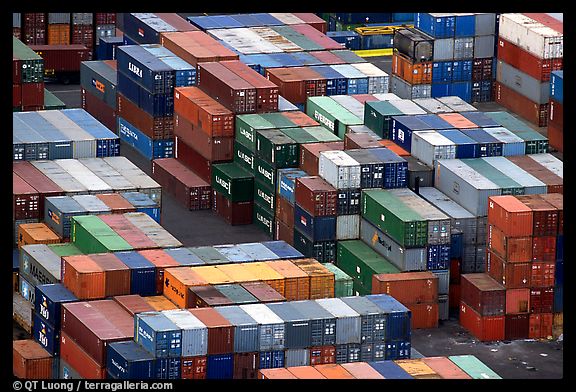Data Center in a Container
![]() Normally, I wouldn't believe it, but the more I think about it, the more it makes sense.
Normally, I wouldn't believe it, but the more I think about it, the more it makes sense.
Microsoft plans to work with a systems integrator to outfit a complete half million square foot data center in the Chicago area with 40-foot containers optimized for power and cooling.
When I was in grad school, there was an entrepreneur who interviewed me and some of my classmate co-op MBA students. He had a business plan and a Canadian federal government grant to analyze the feasibility of using old railway cars to develop [[hydroponic]] production units. The point was that tomatoes and lettuce become really expensive and somewhat scarce in February in Winnipeg and Yellowknife.
I didn't get the job, and as far as I know, none of my classmates got it either. I never learned what happened to the idea.
As this post shows, there are many, many challenges to standardizing the basic building block of every data center at a larger scale – specifically from the basic server to a server container with 1,500 servers and consuming 1 Megawatt hour of electrical power each.
Some of the issues that Microsoft has addressed in their plan:
- Airside cooling, which is the use of outdoor air cooling of the server farm is not practical because of the low humidity of winter air causing static buildup (disastrous).
- No data center workers need enter the containers. Failed servers will be ignored until the number of operating units fall below some threshold when the entire container becomes the replaced unit. This cuts out the 20-50% of outages due to administrator error.
 As intriguing as the idea of the server container is, it is because Microsoft hosted applications insist on Microsoft OS which, SURPRISE, is only available on select servers. In contrast, a more effective architecture might be use a bigger computer. IBM's system z implementation and practice of virtualization consolidates the physical resources of processors, storage, memory and cooling power to facilitate designed in cooling and power performance, works only with Linux or IBM-supported/developed OS.
As intriguing as the idea of the server container is, it is because Microsoft hosted applications insist on Microsoft OS which, SURPRISE, is only available on select servers. In contrast, a more effective architecture might be use a bigger computer. IBM's system z implementation and practice of virtualization consolidates the physical resources of processors, storage, memory and cooling power to facilitate designed in cooling and power performance, works only with Linux or IBM-supported/developed OS.
Maybe Microsoft will use their data center's heat output to stimulate hydroponics in Chicago?
This post has already been read 0 times!
Edit
